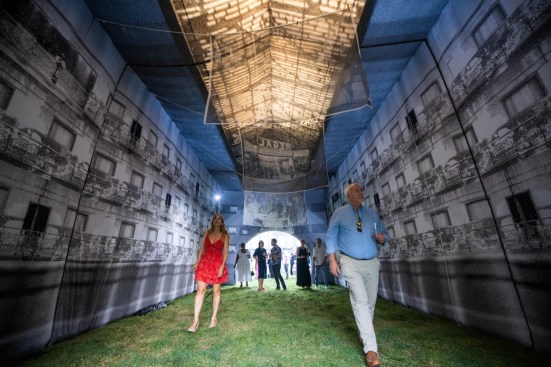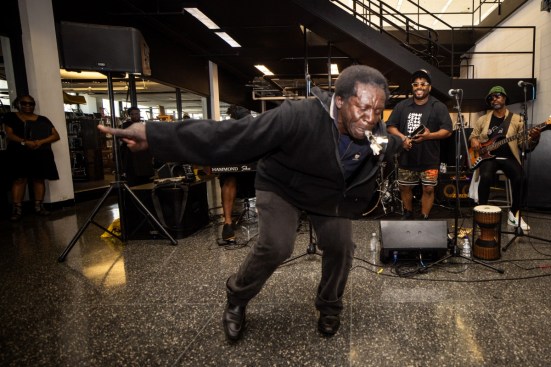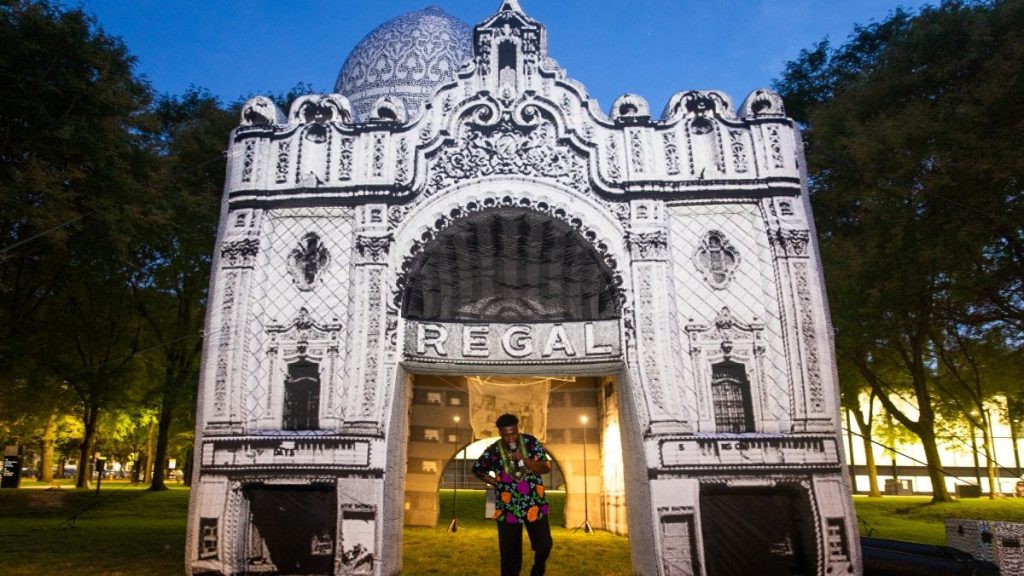Mecca Flats was the beating heart of Chicago’s Black Renaissance until it was demolished in 1952. And yet there it was—towering in ghostly form beside the Illinois Institute of Technology’s Crown Hall.
Revived as a 30-foot inflatable monument by the Floating Museum, it stood as both a tribute to a lost landmark and a call to remember the communities and culture erased in the name of progress.
Unveiled on August 9, for Mecca is the latest work in the Floating Museum’s Floating Monuments series, which uses large-scale inflatable sculptures to revive the stories of Chicago’s overlooked or vanished sites. Crown Hall sits on the footprint of Mecca Flats, a Romanesque Revival building erected for the 1893 World’s Fair and later converted into apartments. Desegregated in 1911, the building became home to artists, musicians, and writers including Louis Armstrong, Nat “King” Cole, Muddy Waters, Gwendolyn Brooks, and Richard Wright.

Credit: Cory Dewald. Courtesy: Floating Museum.
The debut event began with a musical processional led by Chicago Poet Laureate avery r. young and jazz trumpeter Corey Wilkes, followed by performances from local musicians and storytellers. Historians and community leaders reflected on the building’s architectural significance and cultural legacy, while a panel discussion explored the need to preserve everyday artifacts as part of the historical record.
Designed as a “ghostly architecture,” for Mecca incorporates visual elements from other lost Bronzeville landmarks—the Regal Theater, Savoy Ballroom, and Pilgrim Baptist Church—creating a movable stage for exhibitions, performances, and public dialogue. The installation will travel to Chicago Park District sites and former public housing lots through summer 2026.

Credit: Cory Dewald. Courtesy: Floating Museum.
Later this year, the Floating Museum will begin construction on Practice Space, a 6,367-square-foot cultural hub designed with Woodhouse Tinucci Architects, slated to open in 2026. Like for Mecca, it aims to honor Chicago’s layered histories while fostering spaces for collaboration and community engagement.
